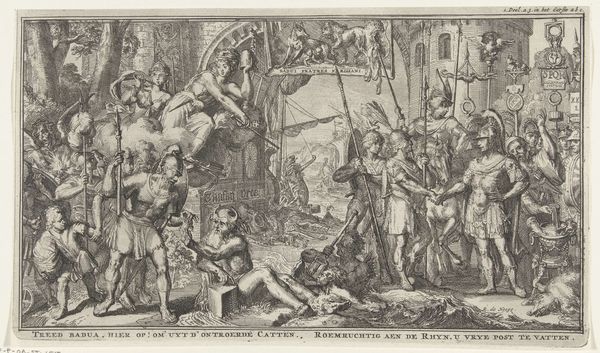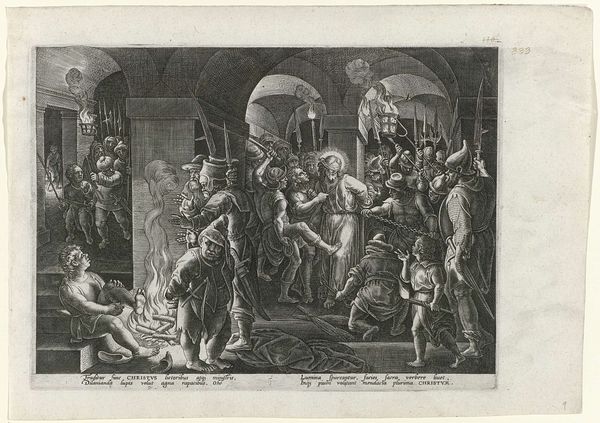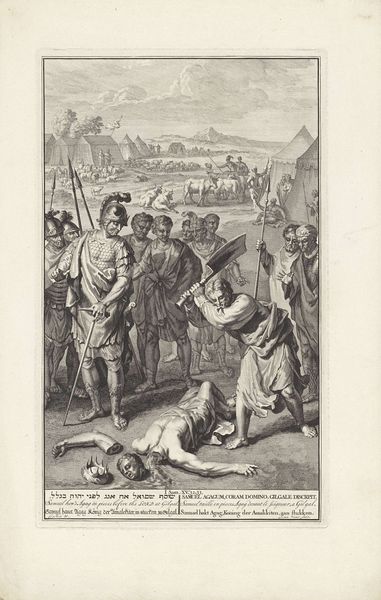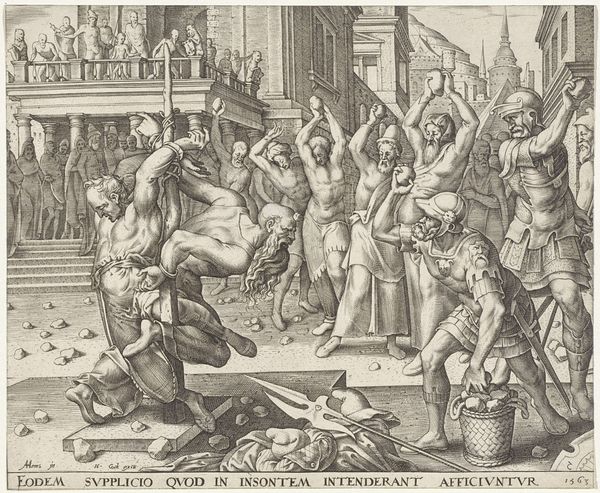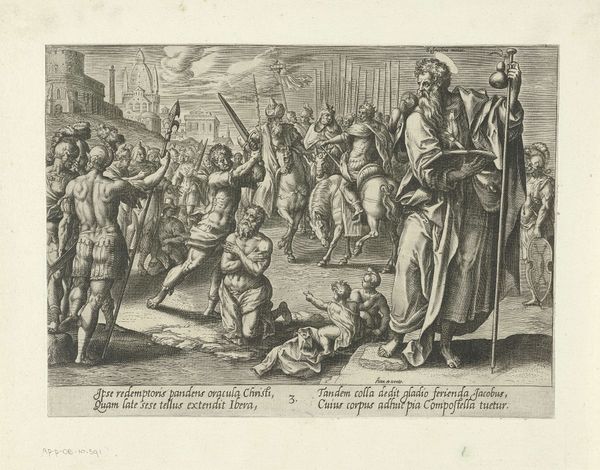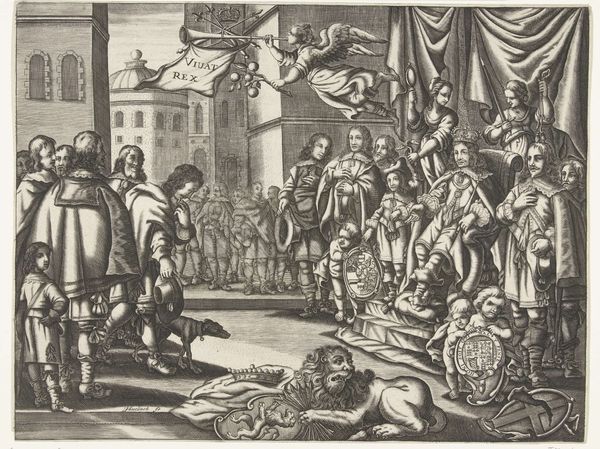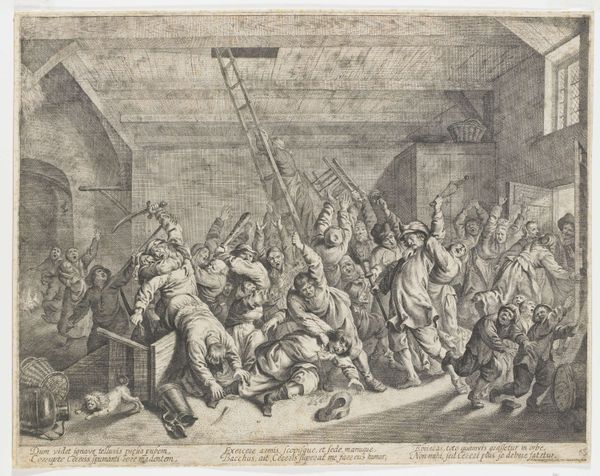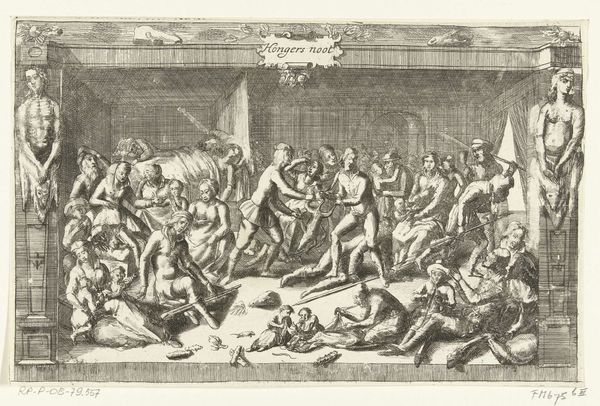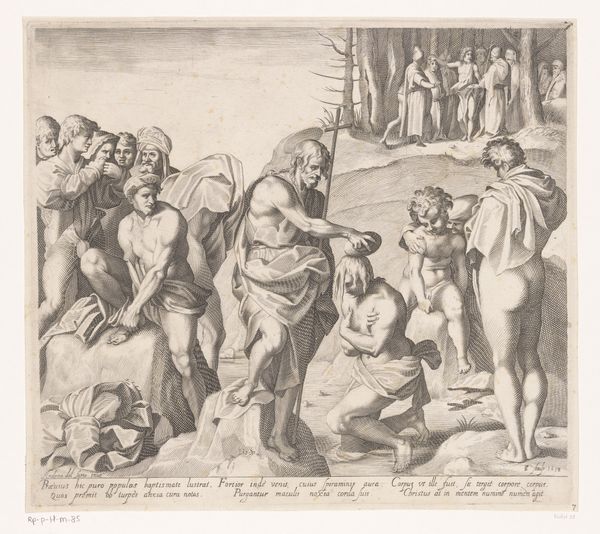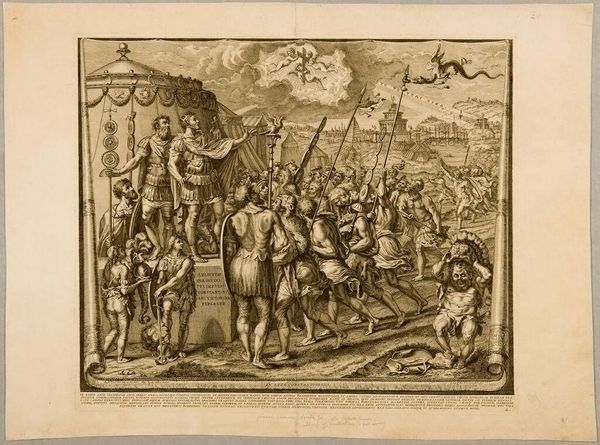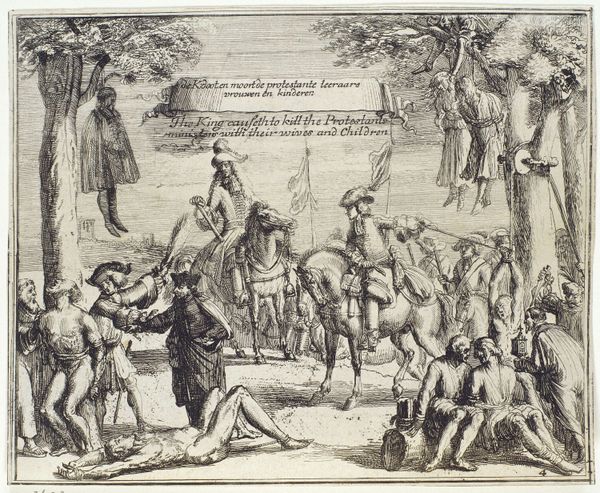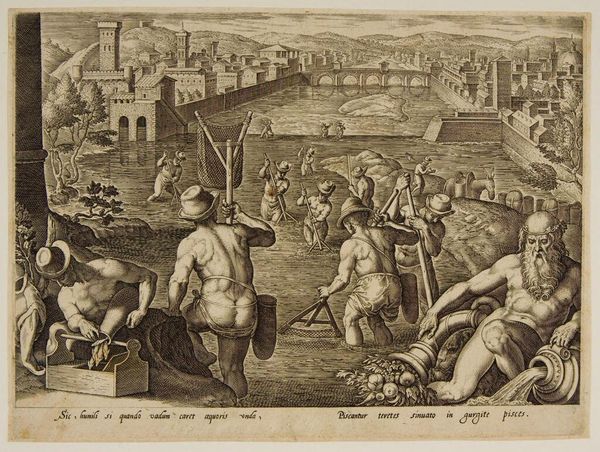
#
pencil drawn
#
light pencil work
#
pen sketch
#
pencil sketch
#
old engraving style
#
personal sketchbook
#
pencil drawing
#
pen-ink sketch
#
pencil work
#
pencil art
Dimensions: height 194 mm, width 264 mm
Copyright: Rijks Museum: Open Domain
Editor: This is "Christ Stripped of His Garments," a pen and ink drawing by Philips Galle, from around 1585. It's incredibly detailed, but the overwhelming feeling I get is one of...brutality. The sheer number of figures and their expressions… How do you interpret this work, Professor? Curator: The emotional weight is certainly carried by the visual symbols at play. Note the placement of Christ, nearly nude and vulnerable, centered amid a sea of heavily armed, jeering figures. Think about the historical context: this image likely served a devotional purpose, to elicit empathy and piety in the viewer, reminding them of Christ's suffering. Galle is not simply depicting a historical event; he's tapping into deep-seated cultural memory. What emotions do the weapons evoke in you? Editor: Definitely fear, a sense of impending violence. They also represent power, and Christ’s complete lack thereof in this moment. Curator: Precisely. The image also incorporates skulls and bones, recurring symbols of mortality, emphasizing not just death but the *earthly* end that awaits all of us. It's a stark reminder of human fragility set against divine sacrifice. Do you find a contrast between the upper and lower sections of the work? Editor: Yes! The top is densely packed with people, a claustrophobic mass, while the bottom has these tools – a disturbing premonition, alongside these remains of death. It does make me think more deeply about suffering as a shared, almost tangible, experience across time. Curator: That recognition of shared humanity—even in suffering—is a core part of what makes religious art so compelling, connecting us to a long chain of cultural experience. Editor: I'll definitely look at religious art differently now, paying closer attention to the symbols and their emotional impact across different eras.
Comments
No comments
Be the first to comment and join the conversation on the ultimate creative platform.

